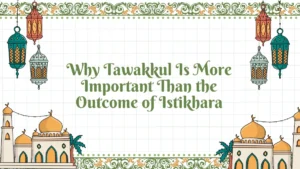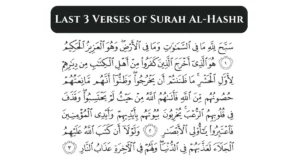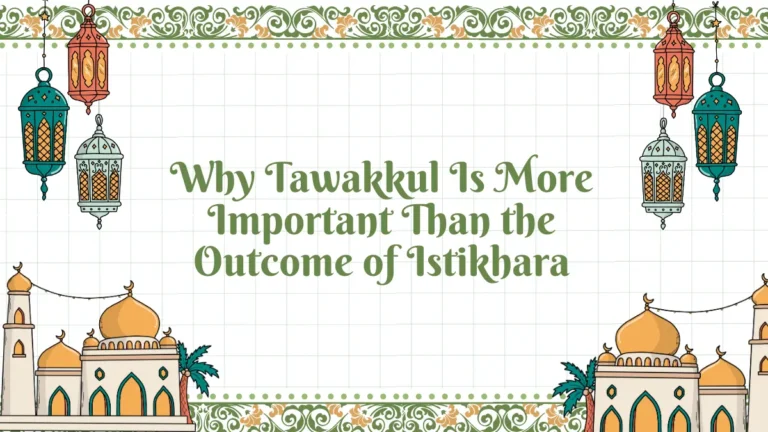Estimated Date for Eid ul Fitr 2025
Based on Saudi Arabia’s calculations, Eid ul Fitr is expected to fall on Sunday, March 30th or Monday, March 31. However, the exact date depends on the sighting of the moon. Local moon sighting committees will have the final say. Be sure to follow announcements from your local mosque for the confirmed date in your area.
Significance of Eid-ul-Fitr
Eid-ul-Fitr is an important festival celebrated by Muslims all over the world. It marks the end of the month-long fasting period of Ramadan. Muslims gather with family and friends to exchange gifts (Eidi), enjoy meals together, and show gratitude to Allah (swt) for the blessings received during Ramadan.
A significant aspect of Eid ul-Fitr is the Zakat al-Fitr (Fitrana), a form of charity that is given to the needy people before the Eid prayer. This charitable act ensures that everyone can partake in the festive spirit of Eid ul-Fitr and is an essential component of this auspicious occasion.
If you want to learn more about the exact amount of Zakat al Fitr, you can visit the Islamic Charity: Sadaqah, and Zakat blog.
On the day of Eid ul-Fitr, Muslims come together to perform the Eid prayer either in mosques or open spaces. This prayer symbolizes unity and brotherhood, highlighting the importance of togetherness for Muslim Ummah. In this blog post, we will explore the journey from fasting to feasting during Eid-ul-Fitr 2025, delving into the cultural and spiritual dimensions that make this celebration so cherished and significant.
What is Eid-ul-Fitr?
Eid-ul-Fitr means “the festival of breaking the fast.” It marks the end of Ramadan, the holy month of fasting. Muslims celebrate it on the first day of Shawwal, the 10th month of the Islamic calendar. On this day, you and I express our joy and gratitude for the excellent health, strength, and opportunities that Allah (swt) has given us to fulfill our fasting obligations.
Ibn Abbas (ra) narrated:
When the day of Eid al-Fitr [begins], the angels descend on earth, where they take their positions at access points of roads, calling out with a voice that is heard by the whole creation of Allah, except men and Jin, “O Ummah of Muhammad (saw)! Come out to your most Noble and Gracious Lord, who grants much, and pardons the major sins”.
[Lataif al-Ma’arif]
Eid ul-Fitr has its roots in Islamic history and traditions. It is closely linked to the life of Hazrat Muhammad (saw) and some events in early Islam. One of these events is the Battle of Badr, which happened in 624 CE. Since then, Eid ul-Fitr has become one of the most important days in Islam.
Read more about The Significance of the Battle of Badr.
Why do We Celebrate Eid-ul-Fitr?
Eid ul-Fitr is a celebration of completing a month-long practice of fasting, praying, and avoiding negative actions and thoughts. On this special day, Muslims around the world thank Allah (swt) for giving us the strength, willpower, and patience to observe the fasting month of Ramadan and follow His (swt) commands.
On this day, we pray to Allah (swt) for guidance to continue walking on the right path and to bless us for the good deeds we have done throughout the holy month.
Moon Sighting and Eid ul Fitr 2025 Dates
The exact date of Eid ul Fitr depends on the sighting of the crescent moon, signifying the beginning of Shawwal, the 10th Islamic month. This sighting usually happens on the 29th day of Ramadan. However, the Islamic calendar is lunar, and months can be 29 or 30 days long. If the crescent moon isn’t visible on the 29th, the month of Ramadan continues for another day, and Eid ul Fitr is celebrated one day later.
Based on astronomical calculations, Eid ul Fitr 2025 is expected to be on Sunday March 30th or Monday, March 31 in many countries, including:
- Gulf Countries (Saudi Arabia, UAE, Qatar, etc.)
- Egypt
- Turkey
- Iran
- Most Middle Eastern and North African countries
However, the official confirmation will depend on the announcements about moon sightings in each locality.
In some Western countries, Eid ul Fitr might be celebrated on Monday, March 31st. This is because moon sightings may be reported a day later due to factors like weather conditions or the position of the moon. Here are some examples:
- USA
- Canada
- United Kingdom
- Europe (depending on moon sighting announcements)
It’s always best to follow the trusted moon sighting committees or Islamic centers in your area for the confirmed date of Eid ul Fitr 2025.
Hazrat Abu Huraira (RA) narrated that the Prophet Muhammad (saw) said:
“Fast when you see it (the new moon of Ramadan) and break your fast when you see it (the new moon of Shawwal), but if the sky is cloudy for you, then complete the number (of thirty).”
(Sahih Muslim 1081b)
You can also check the IslamicFinder website for the latest updates and information on Eid-ul-Fitr 2025.
The Night Before Eid and Moon Sighting Excitement:
One of the most exciting aspects of Eid-ul-Fitr is the anticipation of the moon sighting. The new moon has a symbolic significance, as it represents the end of Ramadan’s fasting and spiritual activities and the start of a new lunar month full of blessings and opportunities. The moon sighting also brings Muslims together as they share the joy of celebrating Eid with their families and friends.
The night before Eid is also known as ‘Laylat al-Ja’izah’ or ‘the Night of Rewards’. The Messenger of Allah (saw) said,
‘There are five nights on which du’a is not rejected: the first night of Rajab, the fifteenth night of Sha’ban, Thursday night, the night before Eid al-Fitr and the night before Eid al-Nahr (al-Adha)’.
[Suyuti]
The Moon Sighting Practices Across the World
Different countries have different ways of observing the moon sighting. Some countries rely on astronomical calculations, while others follow the tradition of physically sighting the crescent moon.
Some countries also follow the decision of Saudi Arabia, while others have their own local moon sighting committees. These differentiation may result in different dates of Eid-ul-Fitr across the world, but they also reflect the diversity and richness of the Muslim culture.
Eid Prayer (Salah) Preparations
Eid Salah (prayer) takes place in the early morning (after Fajr). We perform Eid prayer after the sun has risen. Muslims are encouraged to pray in Jama’ah (congregation) with their local Muslim community on such occasions.
For detailed information on Congregational Prayer, Visit our Blog. Congregational Prayer: Conditions, Leadership, and Rulings
Please check with your local mosque regarding the prayer schedule in your area.
Getting Ready for the Eid Prayer
Before we go to the Eid prayer, we should do the following things:
– Before going to the Eid prayer, it is Sunnah to perform ghusl (a ritual ablution).
– It is Sunnah to dress in our finest clothes, and use good fragrance for this day of celebration.
– Eat something before heading to the Eid prayer, preferably dates, following the tradition of Prophet Muhammad (PBUH). Eating before the Eid prayer is a sign of following the Sunnah of our beloved Prophet Muhammad (PBUH).
– You should also remember to give Fitrana (zakat al-fitr) to needy people, as this is an obligation for every Muslim who has enough food for the day. Fitrana should be paid prior to the Eid prayer. However, it is preferable to provide it a few days before Eid to ensure everyone has plenty of time to fulfill their needs and celebrate the occasion appropriately.
– While heading to the prayer location, recite the Takbeer to honor Allah’s greatness.
It is sunnah to recite the general takbeerat along the way. This is: Allahu Akbar, Allahu Akbar. La ilaaha illa-llaah, wa-llaahu Akbar, Allahu Akbar, wa li-llaahil hamd.
How to Perform Eid-ul-Fitr Prayer
Eid-ul-Fitr and Eid-al-Adha prayers consist of two raka’ah (units), each with additional takbeers. It was narrated from Hazrat Abdur-Rahman bin Abi Laila (ra) that ‘Hazrat Umar (ra) said:
“Jumu’ah prayer is two rak’ahs, and the prayer of Al-Fitr is two rak’ahs, and the prayer of Al-Adha is two rak’ahs, and the prayer when traveling is two rak’ahs, complete and not shortened, on the tongue of Muhammad (saw).”
Sunan an-Nasai 1420
Here’s a step-by-step guide for Eid prayer:
First, make the Niyyah (intention) by reciting, “I intend to do two Rakat behind the Imam for Eid prayer along with six additional Takbeers.
The sincere intention is most important in Islam for every Ibadah; for more information, you can visit our blog post Importance of Making Sincere Intention.
First Rak’ah
- As you say “Allahu Akbar” (the opening takbir), raise your hands to your ears.
- Next, Say the opening supplication (Subhanaka) quietly to yourself.
- Now comes the main thing that differentiates the Eid prayer from other prayers! The Imam will now recite THREE takbeers.
- For the FIRST TWO takbeer, raise your hands up to your ears and then let them fall to your sides. After the THIRD takbeer, close your hands just like regular prayer and listen to the Imam recite Surah al-Fatihah and an additional surah.
- The rest follows the same structure as a regular rak’ah.
Second Rak’ah
- In the second rakaat, the Imam will first recite Surah Fatiha and some other Surah.
- After this Qur’an recitation, the Imam will recite THREE takbeers again! Remember, for each takbeer, raise your hands to your ears/shoulders and let them fall to your side.
- When the Imam says FOURTH takbeer, go down into a bowing position (ruku) and then complete the namaz as you would do in normal prayer.
*Please note: This is the Hanafi method of performing Eid prayer. If the Imam recites more takbeer, please follow the Imam.
Click on the link and follow this step-by-step guide to learn how to perform the Eid prayer correctly and make the most of this blessed occasion.
Listening to the Sermon
After completing the prayer, the Imam will deliver a sermon that usually lasts about 10 to 15 minutes. It’s essential to listen attentively as the Imam shares insights on Islamic teachings.
How Do We Celebrate Eid-ul-Fitr?
During Eid al-Fitr celebrations, we exchange gifts, greetings, and wishes, a significant part of the festival. We wear new clothes, share sweets, and greet each other with phrases like “Eid Mubarak,” meaning “have a blessed Eid.”
Elders give children money and gifts, known as Eidi. We also exchange sweet treats like dates and cookies with friends, neighbors, colleagues, and even strangers. We buy presents, usually for the youngest members of our families.
Eid-ul-Fitr Food
Eid al-Fitr is sometimes called the Sweet Eid or Sugar Feast because of the wide range of delicious sweet dishes that we enjoy during the celebration.
The celebration begins with a light breakfast that usually includes dates and sweets. For lunch, we come together with our families and friends to enjoy local treats.
The feast also includes various dishes like haleem, biryani, kebabs, and nihari, as well as the traditional dessert, sevian (Saviyan), in Pakistan. The food on this day is different in different countries.
Eid-ul-Fitr Around the World
Eid al-Fitr is celebrated with diverse traditions around the world, both in Islamic and non-Islamic countries. In Islamic nations, the festivities often include special prayers, communal gatherings, and elaborate feasts; however, cultural differentiation add unique flavors to the celebrations.
Non-Islamic countries also witness vibrant Eid al-Fitr celebrations. In the United States, Muslims often organize large community events and open houses to share the joy of Eid with their neighbors. While, in the United Kingdom, multicultural cities host diverse celebrations that blend traditional customs and modern influences.
In Turkey, Eid al-Fitr is known as Ramazan Bayrami or Seker Bayrami, and many people go to the beach to enjoy the hot weather. In Indonesia, Eid al-Fitr is locally known as Lebaran, and people ask their elders and relatives for forgiveness.
FAQs
It is pronounced as: “Eed-ool-Fitr”.
-“Eed” rhymes with “feed.”
-“ool” sounds like “pool” without the ‘p.’
-“Fitr” is pronounced as “fit-er” with a soft “t.”
Eid ul-Fitr is traditionally celebrated for 1 to 3 days, depending on the country and culture.
In the Eid prayer:
–For Hanafi School: There are 6 additional Takbeers (3 in the first rak’ah after the opening Takbeer and before recitation, and 3 in the second rak’ah before going into Rukoo).
–For Other Schools (e.g., Shafi’i and Hanbali): There are typically 12 Takbeers (7 in the first rak’ah and 5 in the second).
Conclusion: Celebrating Eid-ul-Fitr
As we did farewell to the blessed month of Ramadan, let us cherish the spiritual lessons we learned from fasting, praying, and seeking to please Allah (swt). Ramadan taught us to be grateful for what we have, to share with those in need, and to strengthen our bonds with our fellow Muslims. These are the values that we celebrate on Eid-ul-Fitr, the festival of breaking the fast.
Eid-ul-Fitr is a joyous and memorable occasion for Muslims all over the world. It is a gift from Allah (swt), who wants us to enjoy His bounty, to spread His peace, and to love His creation. May Allah (swt) make every Eid-ul-Fitr a source of happiness, renewal, and spiritual growth for us and our loved ones. Amin.
Eid Mubarak to you and your family!










Eid-ul-Fitr is truly a blessed occasion that reminds us of gratitude, unity, and charity. After completing the month of Ramadan, Muslims around the world celebrate with joy, but also with a renewed spirit of faith. Beyond the festivities, Eid is about strengthening our relationship with Allah (SWT) and continuing the habits of worship we built during Ramadan.
For those who wish to keep this spiritual connection alive even after Eid, reciting and reflecting on surah yaseen is a beautiful way to gain peace and blessings in daily life. It is known as the “heart of the Qur’an” and carries countless virtues for believers.
Your wisdom is incredible